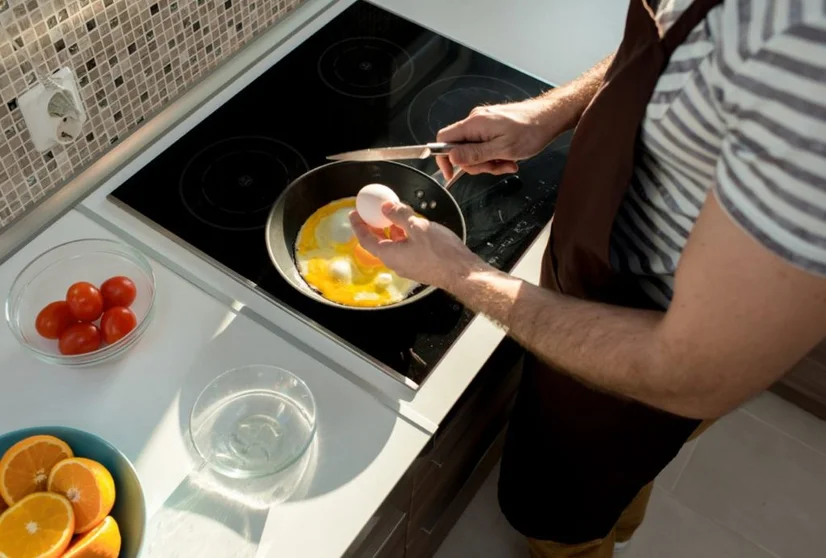In the realm of culinary arts, the fusion of traditional and modern cooking techniques presents endless possibilities. For kitchen professionals, the concept of baking in cast iron on induction represents a harmonious blend of time-tested cookware and contemporary technology. This innovative approach not only enhances the baking experience but also elevates the quality of the dishes crafted. Within the first few moments of this exploration, you'll discover the advantages and challenges that come with using cast iron on an induction cooktop, providing insights that can transform your culinary practices.
Induction cooking has revolutionized the kitchen landscape, offering precise heat control and energy efficiency. When paired with cast iron, known for its exceptional heat retention and even distribution, the potential for creating perfectly baked dishes is immense. However, understanding the nuances of this partnership is crucial to unlocking its full potential.

Why Choose Cast Iron for Baking?
Cast iron has been a staple in kitchens for centuries, revered for its durability and versatility. When it comes to baking, cast iron's ability to maintain a consistent temperature is invaluable. This characteristic ensures that baked goods are evenly cooked, with a desirable crust and a moist interior. From artisan breads to decadent desserts, cast iron can handle a variety of baking tasks with ease.
Moreover, cast iron's natural non-stick surface, developed over time through seasoning, adds another layer of appeal. This feature not only facilitates easy release of baked goods but also enhances flavor development, making it a preferred choice for many professional chefs.
The Induction Advantage
Induction cooktops have gained popularity in professional kitchens due to their precision and speed. Unlike traditional gas or electric stoves, induction cooking utilizes electromagnetic energy to directly heat cookware, resulting in faster heat-up times and greater energy efficiency. This method of cooking is particularly advantageous when using cast iron, as it ensures rapid and uniform heating across the entire surface of the cookware.
For those new to induction cooking with cast iron, it's important to note that not all cast iron cookware is induction-compatible. Ensure your pans have a flat base and are made from materials that can interact with the electromagnetic field, such as ferrous metal. Brands like Lodge and Le Creuset are known for producing high-quality, induction-friendly cast iron cookware.
Mastering Baking in Cast Iron on Induction
The key to mastering baking in cast iron on induction lies in understanding the interplay between the cookware and the cooktop. Here are some tips to help you achieve the best results:
Preheating is Crucial
One of the most important steps in baking with cast iron on induction is preheating the pan. This ensures that the heat is evenly distributed before you add your ingredients, promoting consistent baking. Depending on the dish, you may need to adjust the preheat time, but generally, 10-15 minutes should suffice.
Consider the type of food you're baking and the desired outcome. For instance, if you're baking a pizza, preheat the cast iron to a higher temperature to achieve a crispy crust. On the other hand, for delicate pastries, a moderate preheat will prevent over-browning.
Temperature Control
One of the primary benefits of induction cooking is its superior temperature control. This feature is particularly useful when baking with cast iron, as it allows for precise adjustments during the cooking process. Whether you're simmering a sauce or baking a souffl, maintaining the right temperature is key to achieving culinary perfection.
For additional insights on how to manage heat effectively, explore this guide to temperature control with cast iron.
Seasoning and Maintenance
Proper seasoning and maintenance of your cast iron cookware are essential to ensure its longevity and performance. Regularly seasoning your pans not only prevents sticking but also enhances the natural non-stick properties of the cookware. After each use, clean the cast iron with warm water and a soft brush, avoiding harsh detergents that can strip the seasoning.
For a comprehensive guide on maintaining your cast iron, visit this external resource.

Common Challenges and Solutions
While baking in cast iron on induction offers numerous benefits, there are some challenges that professionals may encounter. One common issue is uneven cooking, which can occur if the cast iron is not properly preheated or if the cooktop's heat distribution is inconsistent. To address this, ensure the cookware is centered on the induction zone and preheated adequately before adding ingredients.
Another challenge is maintaining the seasoning on cast iron, especially when cooking acidic ingredients that can strip the protective layer. To mitigate this, apply a thin coat of oil after each use and re-season the pan as needed.
Frequently Asked Questions
Q: Can all cast iron pans be used on induction cooktops?
A: Not all cast iron pans are suitable for induction. Ensure your cookware has a flat base and is made from ferrous metal to ensure compatibility.
Q: How do I prevent baked goods from sticking to the cast iron?
A: Proper seasoning and preheating are key to preventing sticking. Additionally, using parchment paper or a light coating of oil can help.
Q: Is it safe to use cast iron on high heat with induction?
A: Yes, cast iron can withstand high temperatures, but it's important to monitor the heat to prevent damage to the cookware or overcooking of the food.
In conclusion, baking in cast iron on induction is a rewarding technique that combines the best of both worlds. By understanding the unique properties of each component and mastering the subtleties of temperature control, kitchen professionals can elevate their baking prowess and create dishes that are both delicious and visually stunning.
For further reading on the benefits and techniques of using cast iron, explore this external link.





Leave a comment
This site is protected by hCaptcha and the hCaptcha Privacy Policy and Terms of Service apply.